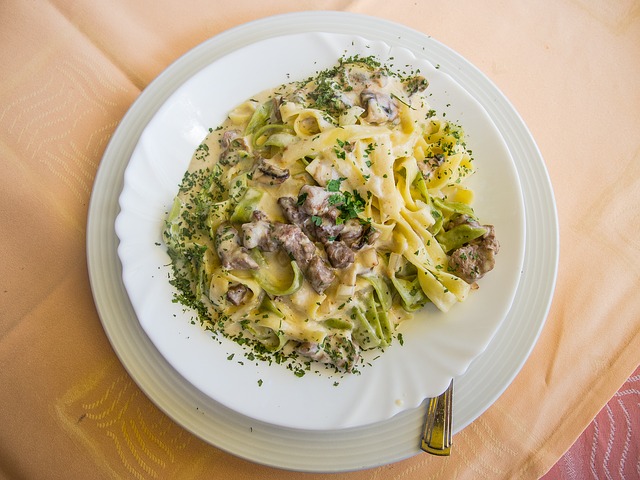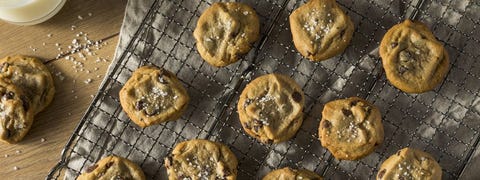
You can now coat nonstick pans with many different materials. Each material has its own advantages and disadvantages. Teflon is one the most well-known materials. This material is known for being durable and highly resistant to temperature changes. Teflon may be dangerous to food if heated at too high temperatures. We'll be talking about Teflon in this article and discussing the other alternatives. This is the type of coating that nonstick pans with the best results are not likely to have.
PFOA
Nonstick cookware containing PTFE or PFOA is not recommended for high temperatures. These coatings rapidly degrade and can release toxic chemicals when heated. Using metal utensils on a nonstick surface can also lead to the degrading of the coating and release chemicals. This article will cover the possible risks and health effects of PFOA frying pans. These tips provide a comprehensive overview of nonstick pots.
PFOA (and other PFAS chemicals such as PTFE) are persistent in our environment. These chemicals can be found in the groundwater, air, and water even if they were used 10 years ago. The Environmental Protection Agency (EPA), and the World Health Organization(WHO) issued a health advisory due to these risks. These chemicals have been identified as potentially carcinogenic to humans.
PTFE
Nonstick pan coatings made of PTFE are most popular and can prove to be extremely useful when preparing meals for large groups. They can prevent food from sticking in the pan, even without the use oil or nonstick cook spray. Nonstick pans coated with PTFE are more expensive than regular nonstick ones. However, nonstick pans need to be maintained and cleaned regularly. FDA has deemed PTFE nonstick pan coatings safe but not entirely non-toxic. Ceramic cookware is healthier. Cast iron is safe because it doesn't contain PTFE.

PFAS has been in cookware for decades. Many of these substances have been dumped into the waterways without regulation. According to the Environmental Working Group, 19 million Americans are at high risk of being exposed. "Gen X," chemicals are the newest and most commonly used in non-stick pan coats. There has been little testing on these substances, raising questions about their safety. Greblon also makes a number of types of PTFE.
Teflon
A nonstick pan with a Teflon nonstick coating has several disadvantages. These issues are most likely due to the PFOA, or polyfluoroalkyl substance (PFAS), that the coating contains. Although these chemicals were banned many years ago, some cookware still contains PFOA. The best way to avoid these hazards is to avoid Teflon pans, and look for nonstick cookware made of other materials.
Teflon non stick Pans can have PFOA in them. This can be very harmful for the environment. It has been linked to chronic kidney disease and cancer, as well as affecting the male reproductive system. When the pan is heated to too high, toxic fumes are released. It should therefore not be used in high-temperature baking. Avoid heating empty Teflon saucepans in the oven and broiler to reduce the chance of being exposed to PFOA.
Nanoparticles
For nonstick pan coatings, novel nanoparticles have been developed and are being tested for food contact. The release of nanoparticles from non stick coatings is not fully understood, but recent studies suggest that the particles may leach into food under high temperatures, repeated use and when the surface of the pan becomes damaged. This technology may prove useful for nonstick pans, although it is still in its infancy.

PTFE (a substance common in nonstick pots) is a subject of concern. The chemical pyrolysis products of heated polytetrafluoroethylene can cause acute toxicosis in budgerigars. These products don't pose a risk to the health of humans if they are used in small amounts.
FAQ
Do I require any special equipment?
Cooking doesn't require special equipment. The best tools will make cooking more enjoyable. For example, a knife could be used for pasta making or a whisk would be better than a hand mixer for whipping egg whites to stiff peaks. The right tools make cooking easier and faster.
What should a beginning cook learn first?
For beginners, it is best to begin with something simple like pasta, rice or soup. Learn how to cook with a recipe book, YouTube video or other resources. Cooking with friends is much more enjoyable. Try cooking together as a family, or have friends share the experience.
How much does culinary school cost?
Costs for culinary school vary depending on where you live, how long you study and which program you choose. Tuition costs range from $10,000 to $30,000. Most students graduate with approximately $20,000 in debt. There are some programs that offer grants and scholarships as well as work-study options.
What can I learn about cooking?
There are numerous cooking classes offered across the country. Many schools offer courses in baking, pastry, and wine tasting. If you're interested in learning more about baking, you can either enroll at a community college or vocational school. Or you can attend a private class.
What are the Essential Skills to Be a Chef?
To be a chef you need a bachelor's level in culinary arts. A number of ACF tests will be required. You will be issued a certificate once you meet all the requirements.
Statistics
- under 10 Kids have been taught that there is special food just for them, and Fiese says that 10 percent of kids will throw a tantrum if they don't get the food they want. (washingtonpost.com)
- The median pay for a chef or head cook is $53,380 per year or $25.66/hour, according to the U.S. Bureau of Labor Statistics (BLS). (learnhowtobecome.org)
- In the United States, the category is estimated at $23.2 billion annually and is growing faster than the market. (washingtonpost.com)
External Links
How To
How to make a perfect Omelette
Omelets are one of my favorite foods to eat at breakfast. How do you make them perfect? There are many recipes and methods I tried, but none worked. So I wanted to share some tips and tricks so that you can make delicious, fluffy omelets every morn.
First, eggs can be very temperamental ingredients for making omelets. They must be fresh, preferably from the organic market, and be kept cold until cooking. They must be kept cool, otherwise the whites will not form properly and the yolks may become runny. Your omelets will look strangely colored if this happens. It is best to use room-temperature eggs if you are going to cook them right away.
You might also try separating the egg before adding to the pan. You don't want the white to get mixed with the yolk, as this could cause the egg to curdle.
You could end up burning the bottom half of the egg if the egg is added directly to the heat source. Instead, put the egg in the microwave for 10 seconds before putting it into the pan. The microwave heat cooks your egg just right, without it becoming too soft.
Next, let us talk about how to mix the eggs. When mixing eggs, it is important to thoroughly beat them. Turn the bowl upside down and grab the whisk to do this. Then, vigorously shake the bowl. This will whip the air around the bowl and mix the egg well.
Now it's time to have fun: pour the milk into the mixture. Mix half of the milk with the eggs. Then fold the eggs in half into the remaining milk. You don't need to worry if streaks remain. They will disappear once you flip your omelet.
After folding the eggs fold the pan onto medium heat. When the oil starts to hot, wait for the pan to cook. Once the oil begins to heat, add 1/4 cup butter and swirl the pan to coat it. Now carefully crack open the lid of the pan and sprinkle salt into the pan. A pinch of salt will prevent your omelet from sticking in the pan.
Cover the pan once the omelet is formed and allow it to cool completely. Flip the omelet with a spatula, or flip it upside down. Cook the other side for another minute or two. Take the omelet out of the pan and immediately serve.
This recipe works best when you use whole milk.